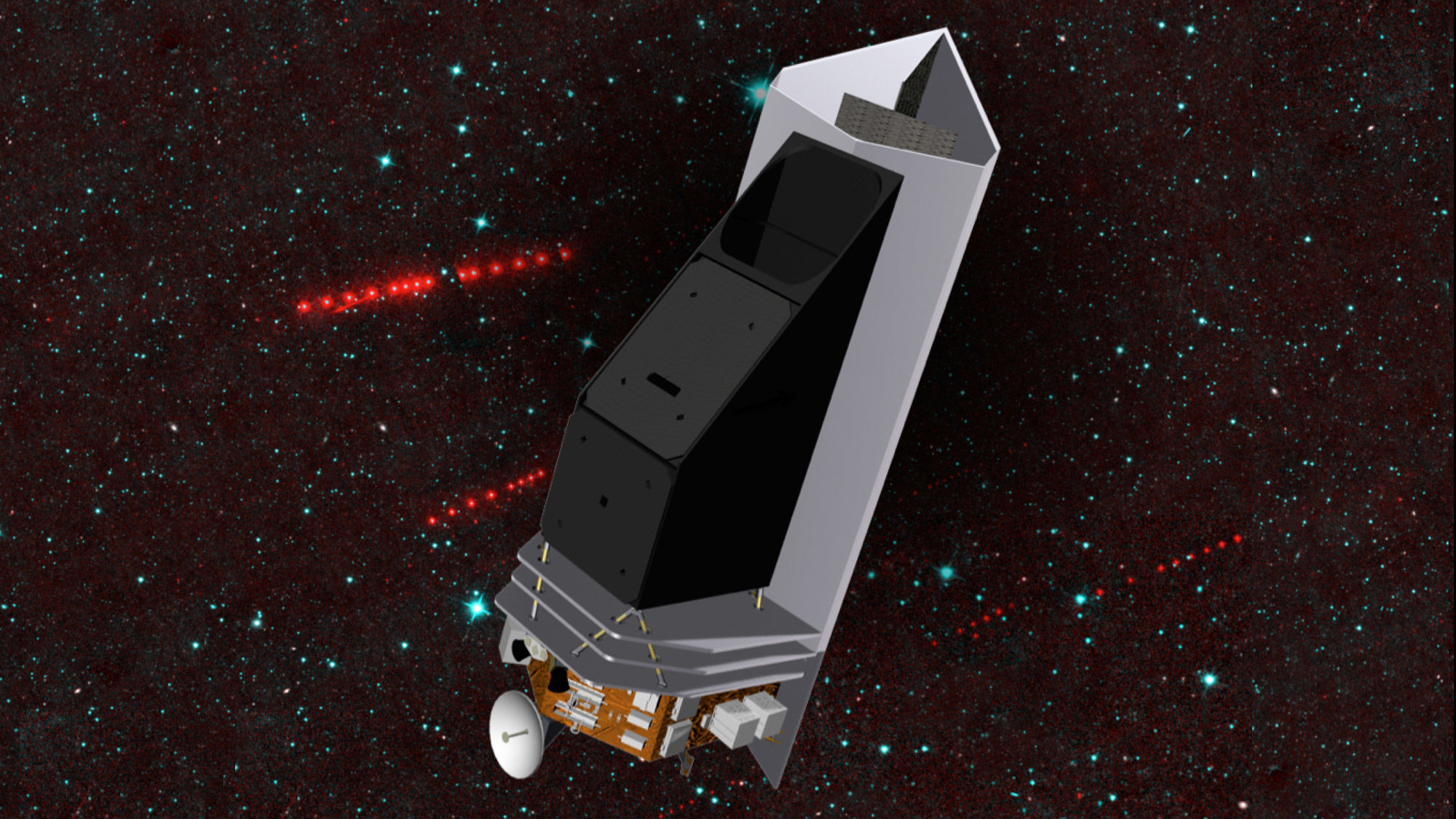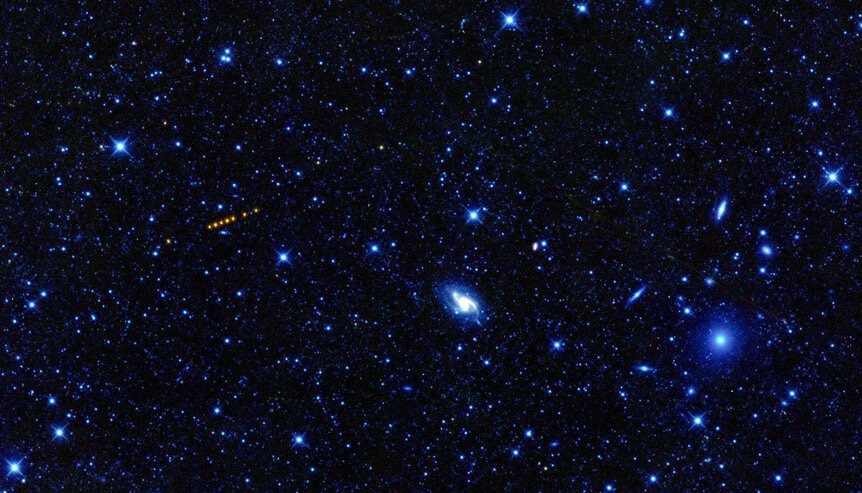Create a free profile to get unlimited access to exclusive videos, sweepstakes, and more!
NASA will build and fly an observatory to look for killer asteroids

It looks like NASA is finally starting to take the threat from asteroid and comet impacts seriously: In September the space agency announced it wants to build and launch a telescope designed specifically to look for Near-Earth Objects (NEOs)! And, in November, the team that will design and build the mission had their first meeting to begin the work needed to get the go-ahead from NASA to start the preliminary design of the spacecraft and its observatory. That's very exciting and very welcome news.
Congress told NASA back in 2005 that they need to find and track 90% of all NEOs larger than 140 meters across (big enough to create regional damage in an impact) by 2020. That is literally impossible now; various issues have delayed this mandate's completion.
That's why this announcement is so cool. NASA wants to build a space-based observatory that can see in infrared (or IR) light, because asteroids warmed by the Sun glow brightly at those wavelengths. Most asteroids are incredibly dark in visible light, reflecting just 4% or so of the light that hits them — as dark as asphalt, or a blackboard. That makes them hard to spot! But they glow in the infrared, making them easier to detect.
Not only that, but because they glow in IR, that makes it easier to figure out how big they are. In visible light you don't know if an asteroid is big and dark, or small and shiny; they both look the same brightness to you from tens of millions of kilometers away. The size and albedo (reflectivity) are intertwined, and impossible to disentangle. In IR, though, the albedo goes away (because it's not reflecting light, it's glowing on its own), so the brightness of an asteroid depends only on its size and its distance (which can be measured directly once the orbit is calculated). That makes the size — critical for understanding damage from impacts as well as mitigation methods to prevent an impact in the first place — much easier to determine.
This method has been shown to work very well by the NEOWISE observatory. This used to be just WISE — the Wide-field Infrared Survey Explorer — which was an infrared satellite that surveyed the whole sky looking for everything from nearby asteroids to extremely distant galaxies. After the coolant ran out, which was needed to use the far-infrared detectors, the mission was extended and repurposed as NEOWISE, to look for just Near-Earth Objects: Comets and asteroids that pass within a relatively close distance of Earth. Using data from NEOWISE, the scientists were able to show that observing asteroids in infrared was a viable way to get their sizes.
They then started work on proposing a new mission, NEOCAM, specifically designed to look for asteroids, following up on the work done by NEOWISE, complementing and greatly expanding it. NEOCAM was competing against other missions in NASA's Discovery program for smaller, less expensive, focused solar system missions, and was doing pretty well, but unfortunately stalled a few years ago.
It looks like their work was not in vain, though. The NASA call for a new mission looks like the legacy of NEOCAM, and better, it won't be competed through Discovery; NASA will fund and run the project directly. The mission is being developed by the University of Arizona and the NASA/Caltech Jet Propulsion Laboratory.
Even better is that the technical direction of the project is being led by my friend Dr. Amy Mainzer! Amy was the Principal Investigator on NEOCAM, is very familiar with hunting for asteroids using infrared space-based observatories, and is a brilliant scientist to boot (she even has an asteroid named after her). Her knowledge and experience in this exact issue will be extremely valuable here, and makes me think this is going to be a really interesting mission to watch.
So what is this new mission? Called NEOSM (Near-Earth Object Surveillance Mission), it could launch as soon as 2025, and the hardware itself will be relatively small — the "wet mass" (spacecraft, telescope, and fuel) will be a little over a ton. The telescope will have a 50-centimeter aperture, which may seem small, but for this mission that's all it'll need. It will be sent to the Earth-Sun L1 point, about 1.5 million kilometers away from Earth on the line connecting it to the Sun. This is where the gravity of the Earth and Sun balance (when you include the centrifugal force of a spacecraft in orbit, too), and it's a stable point in space. Once you put a spacecraft there (or in orbit around that point) it'll stay there unless acted upon by an outside force. It's a great place to put spacecraft to survey the sky.
It will observe in wavelengths of 4–10 microns (the human eye can see out to about 0.75 microns, so this is well into the infrared), where it will be able to spot asteroids relatively easily and calculate their sizes. The goal is to find and characterize more than 65% of all potentially hazardous asteroids (those that pass within about 75 million km of Earth and are bigger than 140 meters in diameter) in 5 years, and 90% in ten years.
Another goal is more subtle, to compute a cumulative impact risk over the next century of any object (including comets) it finds that's bigger than 50 meters. The cumulative impact risk is a funny quantity. Say an asteroid passes by the Earth every year, but the yearly impact risk is 1%. That's relatively small, but if it does that every single year, the risk over a century of an impact is higher than 1%. That's the cumulative risk.
Because impacts don't happen very often, it's hard to get really firm numbers on them. Each event is random, but over time they build a pattern of how often impacts occur on average. That time period can be decades or centuries between decent-sized impacts, so it's hard to know how often they happen for a given size asteroid or comet. One way to understand this better is to look for the impactors themselves while they're still in space, and categorize them by orbit type and size. That's just what NEOSM will do.
So, all in all, I'm really happy to hear this! It's taken a long time to get NASA to take this seriously, though we've had the capability to do this for years. We need to get looking; the skies are not necessarily friendly, and this is a big step in determining just how much we do need to worry about it.




























